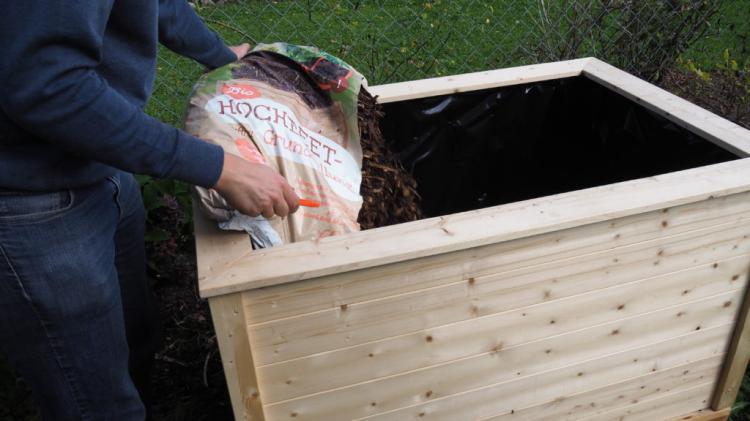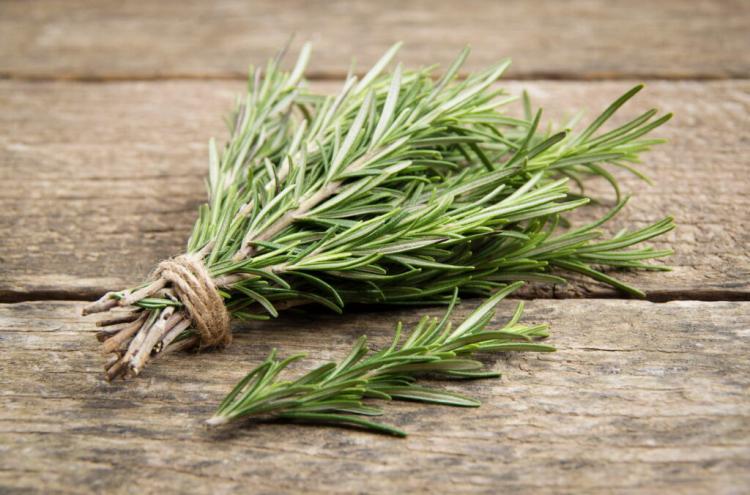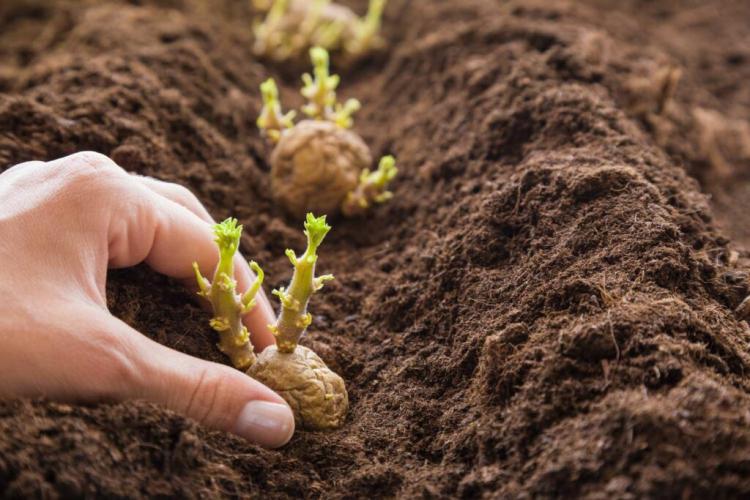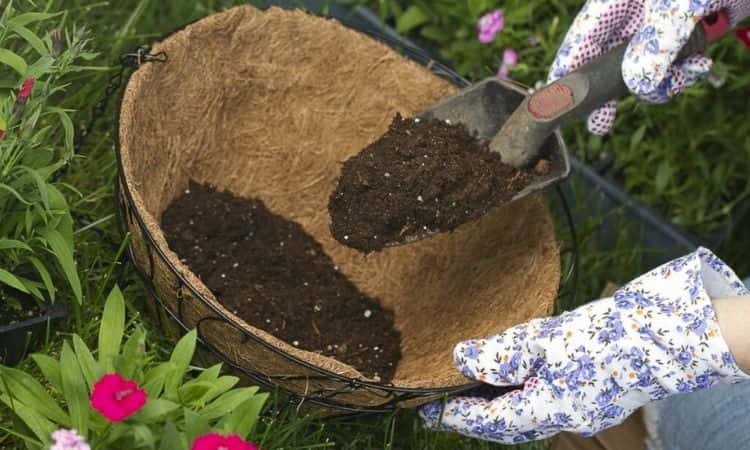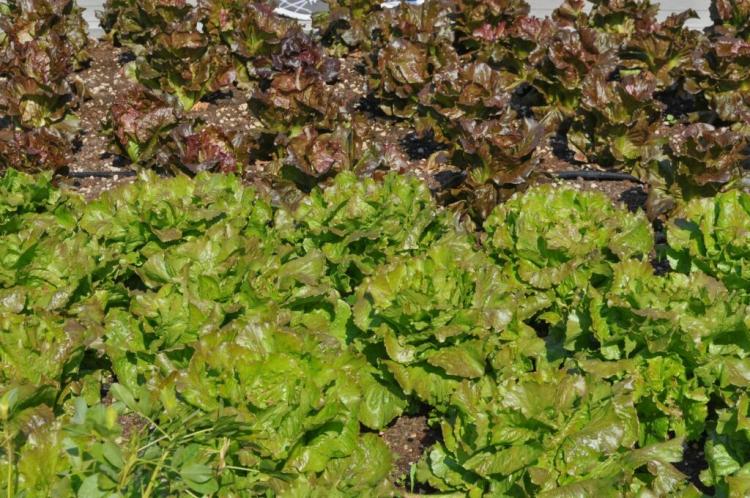Create A Raised Bed In 3 Minutes: Instructions And Video
Building your own raised bed is too time-consuming for you? We show how you can easily create your own raised bed in no time.
The raised bed is and will remain the trend of the last few years. No wonder, after all, the raised bed has some advantages: Above all, back and knee-friendly work is a great relief. At the same time, it offers the perfect conditions for growing vegetables. In addition, the raised bed can still be used in autumn or winter – this is possible with the help of a cold frame attachment. However, many shy away from setting up a raised bed, as the construction and preparation are often tedious. But that doesn’t have to be the case – we’ll show you how to set up your raised bed quickly and easily.
The magic word for quick and easy construction is a prefabricated raised bed. In the meantime, you can find the prefabricated raised beds in every well-stocked garden shop and buy them cheaply. The selection of different models has also become huge. You can not only choose between different heights and sizes, but also between different materials and shapes: Round or square, wood, metal, or plastic – there is a suitable raised bed solution for every garden.
Set up and prepare a raised bed
Once you have decided on a raised bed, setting up and preparing in the garden only takes a few minutes. In principle, you can set up the raised bed anywhere. However, if you want to cultivate certain plants, it makes sense to include their needs in the planning for the raised bed location. A place in full sun is recommended for Mediterranean herbs, while shady plants cannot tolerate full sun. Once the bed has finally found its place, you should use a spirit level to check that it is straight and, if necessary, compensate for any inclination – once the bed is filled, these blemishes are difficult to remedy.

The selection of various ready-made raised beds in stores is large
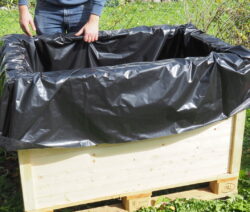
By attaching pond liner, the raised bed is protected from weathering
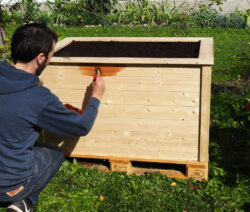
You should varnish the wood so that you have something from your raised bed for a long time
Now you can line your raised bed with foil. This makes sense especially with a raised bed made of wood, as the foil prevents the wood from absorbing the moisture from the bed and from becoming rotten. Pond liner is best suited for this, because it is not only impermeable to water but also extremely robust and tear-resistant. Layout the foil in the raised bed, making sure that it extends into the corners. Now you can staple the foil to the edge of the raised bed. You can carefully remove the excess film with a utility knife. Do not forget to cut holes in the foil on the floor – this is the only way that excess rainwater can run off and there is no waterlogging.
Now the raised bed is protected from moisture from the inside – but what about the outside? You should treat these generously with a wood glaze. This protects the raised bed from the weather and keeps you loyal for longer. So that you can enjoy your raised bed for as long as possible, it is advisable to refresh the glaze once a year (preferably in autumn).
Filling a raised bed: how and with what?
Choosing the right soil is particularly important so that a raised bed bears a rich harvest. If you simply fill your raised bed with normal garden soil, you will quickly notice that your plants are not growing as splendidly as is usual in the raised bed. In fact, when filling the raised bed, different layers are created.
The lowest layer consists of coarse wood cuttings that serve as drainage. This is followed by a layer of compost and a layer of garden soil, followed by the plant substrate. Of course, pruning and compost can come from your own garden. However, it is quicker and easier to buy special raised bed soil: This is available as a basic filling for good drainage, as raised bed compost, and as raised bed soil and can be easily filled into the raised bed from sacks. You can then use high-quality garden or vegetable soil as a top layer, which gives the plants an optimal start in life.
Planting a raised bed: procedure and suitable plants
Now you are spoiled for choice as to which plants are allowed to move into the new raised bed. To get the most out of your bed, it is advisable to draw up a plan beforehand. After the harvest in summer, the bed does not have to remain empty, because many plants can still thrive in the raised bed in autumn. In addition, a certain crop rotation of vegetables in the raised bed makes sense: While the nutrient concentration is very high in the first few years, it dwindles more and more over time. Heavy eaters such as cabbage ( Brassica ), tomatoes ( Solanum Lycopersicum ), or leek ( Allium ampeloprasum ) feel particularly good in the first year. In the second year, on the other hand, medium eaters such as radishes ( Raphanus sativus subsp. Sativus ), carrots ( Daucus carota subsp. Sativus ), or onions ( Allium cepa ) find perfect conditions. In the third year, the weak consumers are content with the remaining nutrients – beans ( Phaseolus vulgaris ), peas ( Pisum sativum ) and herbs are now at home here.

When planting the raised bed, you should pay particular attention to the crop rotation of the individual plants
Even if one wants to use his raised bed, not for vegetables, but beautiful flowers, it is advisable to follow this scheme: In the first year, therefore Stark Zehrer feel like chrysanthemums (Chrysanthemum) and geraniums (Pelargonium) well, followed by Dahlias (Dahlia) and gloxinias ( Sinningia ) and begonias (Begonia ) and primroses ( Primula ) are happy about the nutrient-poor soil in the third year.
You Might Also Like Raised Garden Bed Layers
Raised bed in 3 minutes: summary
- There is a large selection of ready-made raised beds that can be set up quickly and easily
- Find the right location for your raised bed
- Check your raised bed to make sure it is standing straight
- Pond liner protects the raised bed from the elements and can be easily attached with a staple gun
- Holes in the bottom of the film are a must: this is the only way for the water to run off
- A wood glaze also protects the outside of the raised bed from the weather
- Different layers of soil are important for the raised bed: drainage layer made of coarse plant cuttings, compost, garden soil, and plant substrate
- The different types of earth can also be bought simply and easily in sacks
- Draw up a planting plan for your garden: high consumers in the first year, then medium consumers, and finally low consumers
You might so like:
